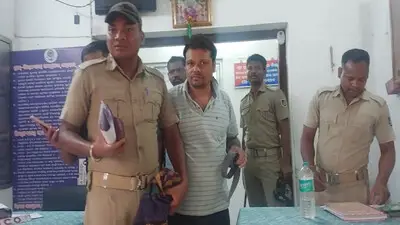Recommended Stories
Three weeks after the magnitude-9 quake and tsunami struck Japan`s northeast where the nuclear plant is situated, thousands of Japanese and US troops launched an intensive three-day air and sea search for thousands of people who still remained unaccounted for following the twin disaster.
Authorities also said that tens of thousands of residents evacuated from areas near the Fukushima nuclear plant may not be allowed home for months, as many of them continued to live in temporary shelters.
In a televised address, Prime Minister Kan said he was ready "to face a long-running battle" at the plant and vowed to win it.
Acknowledging that the nuclear power station, located around 220 km from Tokyo, was not "stable enough yet," Kan promised that he would "inevitably win the battle" and bring the plant under control.
"We cannot say at this stage say by when this will happen, but we are trying our best," he said.
His remarks came as highly radioactive water, which continues to leak from the plant, was found for the first time in groundwater under the crippled plant.
The plant`s operator, Tokyo Electric Power Company (TEPCO), said it has been checking underground water on the advice of the Nuclear Safety Commission of Japan.
It said the radioactive water was detected beneath the ground near the turbine buildings of five of the six reactors The remaining reactor, No.4, could not be checked because it was blocked by debris, national broadcaster NHK reported.
TEPCO said that highly radioactive substances dispersed into the atmosphere may have seeped into the soil through rain and sprayed water, three weeks after the mega quake and tsunami damaged the plant and left nearly 30,000 people dead or unaccounted for in the country`s northeast .
However, the Nuclear and Industrial Safety Agency said some of the analysis data on the groundwater presented by TEPCO cannot be trusted, casting doubts on findings that the concentration of radioactive iodine in the water was 10,000 times the legal limit.
It said the density readings of radioactive substances in groundwater samples taken on Tuesday and Wednesday from around the No.1 reactor`s turbine building may be revised downward, as TEPCO`s evaluation programmes for materials such as tellurium, molybdenum and zirconium were found to have errors.
But, it said the firm`s analysis programmes for radioactive iodine were confirmed to be correct.
"TEPCO faces a grave situation as it is failing to live up to the expectations of people who are very worried by the company. Its data should be trustworthy," Hidehiko Nishiyama, a spokesman for the agency, was quoted as saying by Kyodo.
Earlier this week, TEPCO corrected its analysis of radiation levels in water accumulating in the basement of the No. 2 reactor`s turbine building. It had first described the radiation levels as 10 million times higher than normal before correcting the figure to 100,000 times.
Meanwhile, Japan`s Self-Defense Forces (SDF) and the US military launched a three-day intensive search for those still missing following the massive quake and tsunami.
Using dozens of ships and helicopters, about 18,000 SDF personnel and 7,000 US military troops were involved in the operation along with members of police, Japan Coast Guard and fire departments.
The areas covered included shores that were largely submerged or remained under water and mouths of major rivers in Iwate, Miyagi and Fukushima prefectures, which were hit hard by the March 11 disaster, within about 18 km from the coastline.
The tsunami and earthquake have claimed at least 11,578 lives in 12 prefectures and left 16,451 people officially unaccounted for. Many of those who remained missing are believed to have been carried offshore after the tsunami struck the Pacific coast.
The search drive was timed to coincide with a spring tide, while efforts hit a snag in coastal areas that remained flooded. The tide, with waters ranging between high and low maximum, would make it easier to find victims when it ebbs.
About 100 aircraft and 50 ships from the SDF were engaged in the operation, while the US military was participating with 20 aircraft and 15 ships. Divers from the SDF, police, the coast guard and fire departments were also being mobilised, Kyodo said.
However, the search would not be conducted within a 30-km radius of the troubled nuclear plant in Fukushima Prefecture, which is leaking radioactive materials into the environment, according to the authorities.
Prime Minister Kan said the government would set up a new task force on reconstruction work by April 11.
He invited opposition lawmakers to be part of the panel to cooperate in drafting measures necessary to rebuild the quake-ravaged region.
"If possible, I`d like to have help from people in the opposition camp...and make plans together," Kan said. "I yearn for such a situation to be created."
The Premier also said the government would scrap some of the policies under the budget for fiscal 2011 to generate more money for reconstruction work. He said the first batch of an extra budget will be submitted to the Diet or Parliament by the end of this month.












